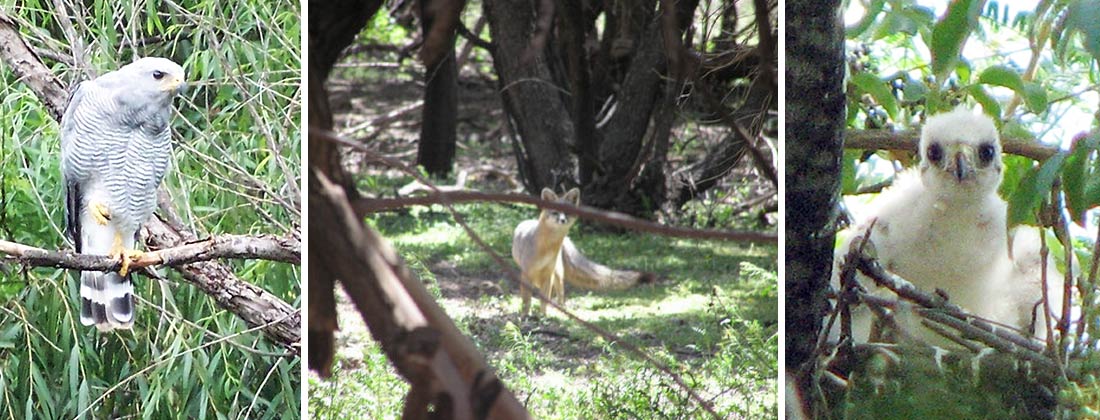[et_pb_section][et_pb_row][et_pb_column type=”4_4″][et_pb_image admin_label=”Image” show_in_lightbox=”off” url_new_window=”off” animation=”off” sticky=”off” src=”https://friendsofsantacruzriver.org/wp-content/uploads/2014/10/riparian_river.jpg” alt=”Mule Deer Grazing by the Santa Cruz River” title_text=”Mule Deer Grazing by the Santa Cruz River” /][et_pb_text admin_label=”Text” background_layout=”light” text_orientation=”left”]
The Santa Cruz River
The Santa Cruz River
The Santa Cruz River (SCR) originates in the Canelo Hills area of southeastern Arizona. It flows south into Mexico, makes a U-turn after about a 12-mile run, and heads back north into the U.S. where it crosses east of the twin cities of Nogales, Sonora and Nogales, Arizona. It is one of the few rivers in the world that run south, then north; and is the only one in the U.S. to cross an international border twice.
To read more, click to download a .pdf of the Environmental Defense Fund’s excellent article on the Santa Cruz River.
Click to download a free .pdf Map of the Santa Cruz River by Joel Floyd.
History
In recorded history, the upper Santa Cruz was a marshy flow, where stream segments connected strings of “cienegas” (Spanish for marshes or slow water habitats). The river never flowed year-round all the way to Tucson (regardless of the claims of hucksters touting ferry schedules from Nogales to Tucson in the 1800s). It was, however, a reliable enough surface supply in many places that in the late 1600s into the 1700s, Father Eusebio Kino established a series of Jesuit missions near the river’s most stable flows.
But by the end of the 19th century, most of the cienegas in the Southwestern U.S. had disappeared, including those along the SCR. Natural factors as well, possibly, as human land use practices caused rivers to incise (cut) their banks, drying up the marshes and altering the riparian zone.
In the 1930s, the wide adoption of electric pumps to draw groundwater up to irrigate crops, especially cotton, brought an explosion of agriculture to the upper Santa Cruz River basin, and put new stresses on the river.
To learn more about the history and culture of the area, click to visit the National Park Service’s website.
Current Status Of The River
Today, the river is much changed from its former self. Groundwater pumping has lowered the level of the subsurface water that once was shallow enough to support reliable surface flow in many places.
The river’s existence as a visible stream is now “effluent dependent,” that is, its surface flow through much of Santa Cruz County is dependent on the discharge of treated wastewater (effluent) from the bi-national Nogales International Wastewater Treatment Plant (NIWTP).
Since the river’s surface flow is now dependent on effluent discharged from the NIWTP, keeping that effluent coming is necessary to keeping the river alive, especially its aquatic environment (including native fish). Of the approximately 15 million gallons per day (mgd) of effluent discharged into the usually-dry Santa Cruz River’s bed in Rio Rico, over three-quarters is from Mexico, and legally, that effluent belongs to Mexico at the discharge point.
In 2013, Mexico built a new wastewater treatment plant in the Los Alisos basin southwest of Nogales in order to reduce sewage volumes being sent across the lines, as well as to recharge the declining Los Alisos aquifer with treated effluent from the new plant.
As a result of the new Mexican plant coming on-line, effluent discharge from the NIWTP has significantly decreased, leading to shortening of the river’s flow from the Rio Rico discharge point north. Where perennial (year-round) flow had been the norm from that point to most of Tubac, now surface flow often disappears south of the Tubac Bridge, and many times has retreated even south of Tumacacori Mission National Park.
However, although the main source of its water has changed, the SCR still supports a tremendous density and diversity of life, much of which cannot survive outside the riparian zone.
An Oasis In An Arid Land
Tall, shady forests and running water are an irresistible combination to residents and tourists alike. Hiking, riding, bird watching, wading, and picnicking are some popular activities on the historic Juan Bautista de Anza National Historic Trail that follows the river. The Santa Cruz River forms a rich green spine that makes our county especially scenic and desirable as a place to live or visit.

Wildlife, Past And Present
Not only humans rely on the river. Over three-quarters of all Arizona wildlife depend on riparian (river-associated) habitat. But in the 20th century alone, the Southwestern U.S. lost the vast majority of our rivers and streams. The forests flanking the Santa Cruz once sheltered wild turkey, beaver, and even grizzly bears. Although they are now gone (with the exception of turkeys, which have returned to the river), a tremendous variety of species still call the river home, or use it as a migration corridor.
Rare species like the Sinaloan wren, Rose-throated becard, Gray hawk, and Yellow-bellied cuckoo nest along the river. The upper Santa Cruz River is such a rich riparian zone that the Audubon Society has declared it an official “Important Bird Area” (IBA).
The river and its tributaries support over 22 threatened or endangered species, including birds, fish, reptiles, and plants. And the cottonwood-willow gallery forest, which supports many of these species, is itself our most endangered forest community.
Addition Information
- Riparian Vegetation Map in Santa Cruz County, AZ
- Species of the Tumacacori National Park (this document is an Excel spreadsheet .xls file)
- Nature and Science of the Tumacacori Mission National Park
- Real-Time Streamflow Data. View real-time streamflow data for the Santa Cruz River as it re-enters the U.S. east of Nogales and at the Tubac Bridge, and flow from the Nogales Wash in Nogales, AZ, on the U.S. Geological Service real-time flow data site.
- Report on ecosystem services quantiifies benefits to people of a healthy Santa Cruz River—for the bi-national Arizona-Mexico Commission
[/et_pb_text][/et_pb_column][/et_pb_row][/et_pb_section]
